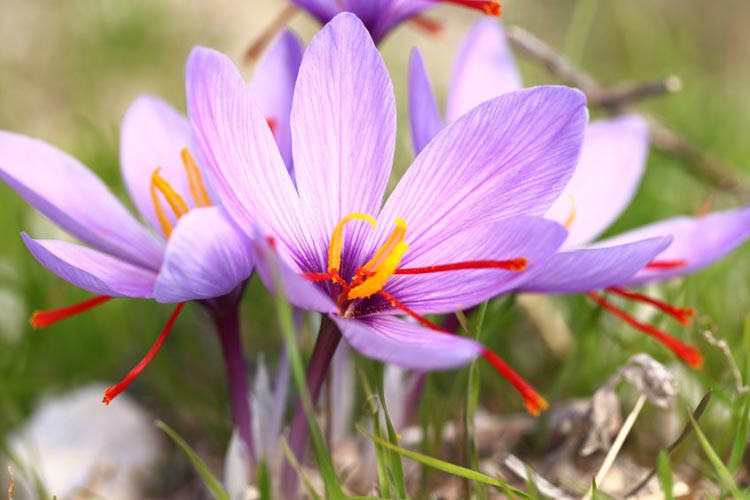Saffron Crocus (Crocus sativus)
Saffron crocus, beyond its aesthetic appeal, is a treasure trove of culinary and medicinal wonders, making it a cherished plant worldwide.
Habit: Saffron, botanically known as Crocus sativus, is a perennial bulbous plant. It boasts slender, grass-like leaves and produces a single flower from each underground corm.
Hardiness: This delicate crocus thrives in USDA hardiness zones 6 to 9. It prefers full sunlight or light shade. Being a fall-blooming crocus, it requires chilling during the winter, making it less suitable for warmer tropical climates.
Flowers and Bloom Time: Saffron crocus blooms in the fall, usually around October. Each flower flaunts a trio of vivid crimson stigmas amidst its purple petals. These stigmas, when dried, become the highly valued saffron threads used in various cuisines and medicinal preparations.
Uses: The primary use of Crocus sativus is for its stigmas which, when dried, produce the luxurious saffron spice. Renowned for its intense golden-yellow hue and unique aroma, saffron is a staple in many world cuisines, especially in dishes from the Middle East, India, and Spain. Apart from culinary applications, saffron has found a place in traditional medicine for its potential health benefits, and it’s also used as a fabric dye.
Benefits: Saffron is rich in various antioxidants, which are believed to have numerous health benefits. These include potential anti-inflammatory and mood-boosting properties. Some studies suggest that saffron might help alleviate symptoms of depression and PMS. Moreover, saffron has been traditionally used to aid digestion and act as an aphrodisiac.
In essence, the Saffron crocus, beyond its aesthetic appeal, is a treasure trove of culinary and medicinal wonders, making it a cherished plant worldwide.

